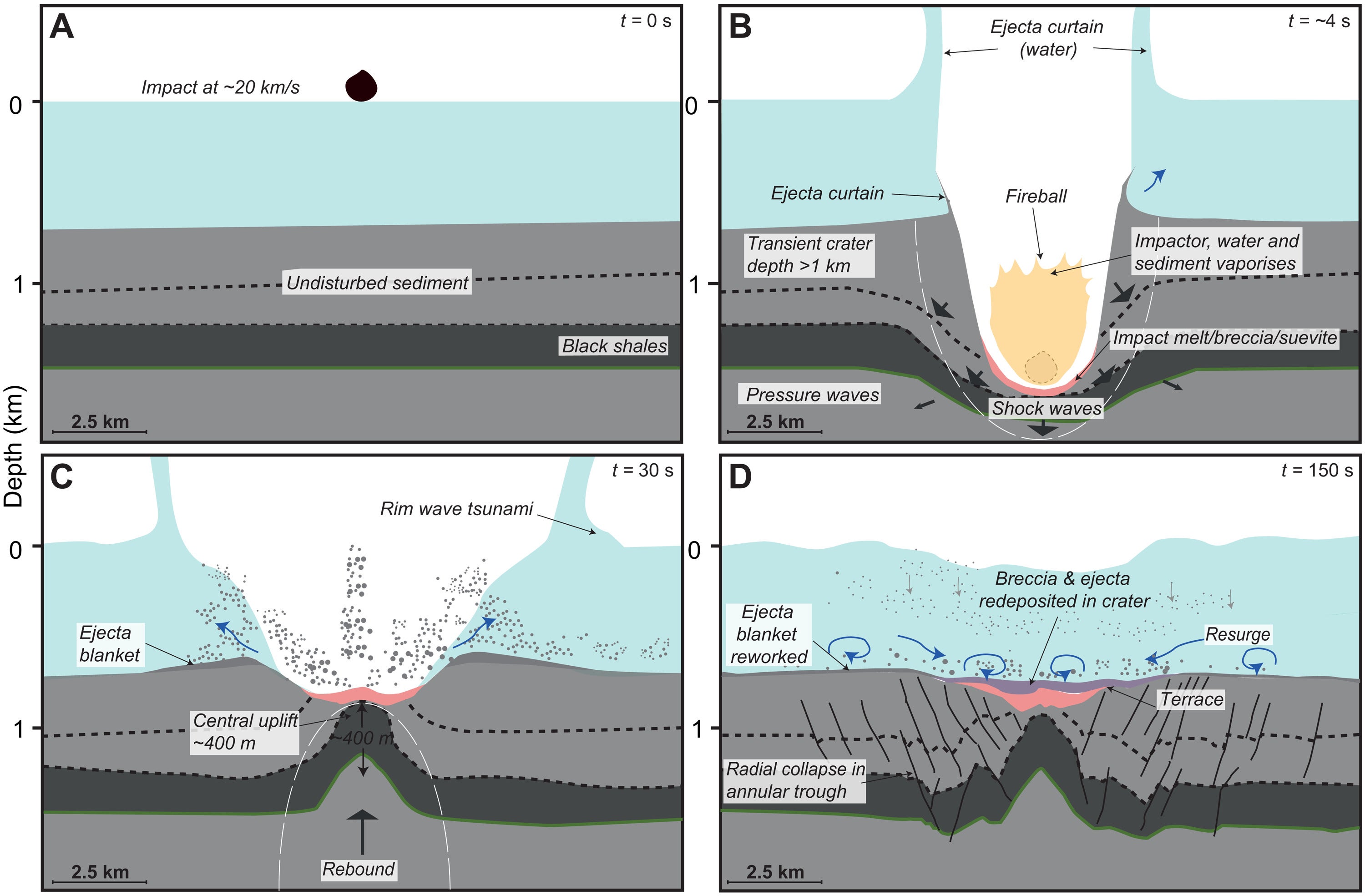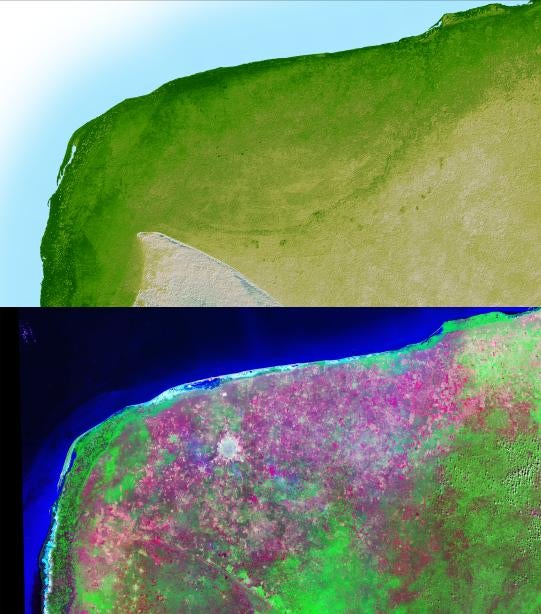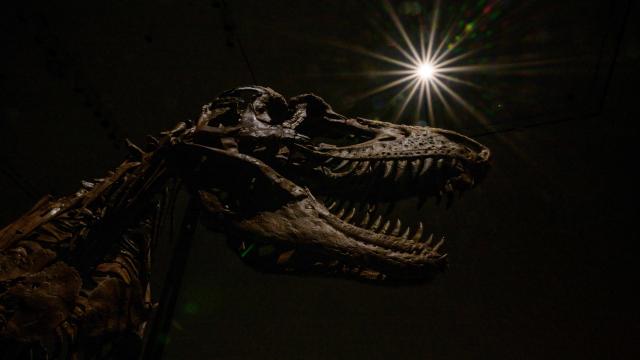Researchers say they’ve discovered a large impact crater on the Atlantic seafloor that appears to be 66 million years old. That means whatever made this crater hit Earth around the same time as the rock that famously slammed into the Yucatán Peninsula, ending the reign of the dinosaurs.
The newly discovered geological feature — off the coast of Guinea and Guinea-Bissau in West Africa — is called the Nadir crater; it is well over 8 km wide and sits a quarter-mile beneath the seafloor and nearly 914.40 m of water. A paper describing the crater’s geological structure and likely origins is published in Science Advances.
In their research, the team proposes three possible origins for the large crater: that it came from the same parent body as the Chicxulub asteroid, which broke up as it approached Earth; that a collision in the asteroid belt sent a smattering of asteroids toward Earth in the same million-year time frame; or that the timing of the two impacts was purely coincidental.
“If the first scenario is correct (same parent asteroid) it provides some really important new information about what happened — both in space and on Earth — during that event,” said Uisdean Nicholson, a geoscientist at Heriot-Watt University in Scotland and lead author of the new paper, in an email to Gizmodo.

Lots of evidence suggests that most life on Earth died after an asteroid strike 66 million years ago. The impact resulted in massive earthquakes, tsunamis, and above all a nuclear winter, which drastically altered the climate. About three-quarters of life on Earth was wiped out by the event, including all of the non-avian dinosaurs.
“The asteroid responsible for Chicxulub is far bigger than that which we propose for Nadir,” Nicholson wrote. “We would expect around 10,000 times more energy to be released from Chicxulub. So the Nadir impact would have been dwarfed by Chicxulub.”
Nevertheless, “Nadir on its own would represent a very significant regional hazard, with major earthquake, tsunami and airblast,” Nicholson added.
The researchers identified the subterranean crater using seismic reflection, a method by which pressure waves are sent through the ocean and the seafloor to detect the different structures throughout the deep-lying sediments. It’s a similar principle to lidar, a technology archaeologists use to see ruins hiding beneath dense foliage.

The crater appears to be caused by an impact, according to the study authors, based on its size and the ratios of its height and width. Computer models indicated that the asteroid that caused the crater was about 396.24 m across and would’ve released about 1,000 times the energy of the massive volcanic eruption in Tonga last year, an event so intense scientists considered adding an entirely new category for extreme eruptions.
But its scale is only a small piece of the puzzle. The most intriguing element of the crater is its age — it appears to have formed at roughly the same time the dinosaurs went extinct.
“It would be unusual to have this newly discovered crater, the 24 km-diameter Boltysh crater, and Chicxulub impact all within around [1 million years],” Peter Schultz, a planetary geologist at Brown University who specialises in impact cratering, told Gizmodo in an email. “If there’s a connection among all three, their separation requires formation related to the break-up of an asteroid so that the fragments intersected the Earth’s orbit.”
First, the team must certify the origins of the crater, which will take some doing. “We cannot definitively state that this is an impact crater until we recover physical samples of shocked minerals from the crater floor,” Nicholson said. The team has proposed a plan to collect a sample of the crater with a drill. They then could accurately date the crater’s age from the core.
The coring work won’t take place before 2024, Nicholson said. But if it takes two years to figure out what exactly happened 66 million years ago, it’ll have been worth the wait.
